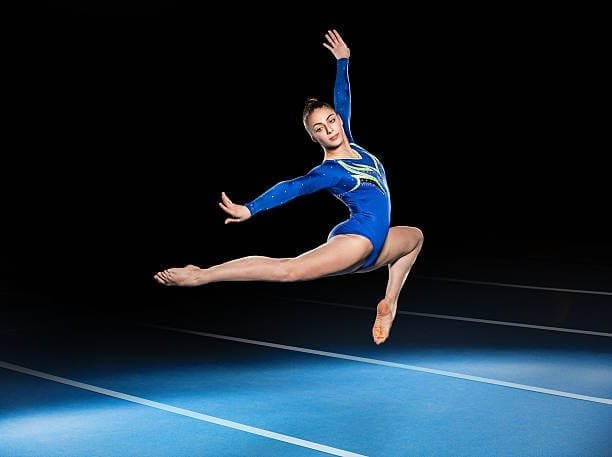Women’s gymnastics has evolved from its origins into a dynamic and influential sport, captivating audiences worldwide with its combination of strength, grace, and precision. From its early days to its modern form, women’s gymnastics has not only pushed the boundaries of athleticism but also played a significant role in shaping perceptions of women in sports. This article explores the history, key events, training, and impact of women’s gymnastics, highlighting its significance and ongoing evolution. Click the link for more information: https://www.theyard.sg/womens-gymnastics/
The History of Women’s Gymnastics
Women’s gymnastics has a rich history that dates back to the 19th century. The sport’s origins can be traced to Europe, where gymnastics was initially developed as a form of physical education. The early emphasis was on promoting physical fitness and discipline. However, it wasn’t until the late 19th and early 20th centuries that women began to compete in gymnastics events.
The first major international competition for women was the 1928 Amsterdam Olympics, where women’s gymnastics made its debut. Although only a few events were included, this marked a significant milestone in the recognition of women’s contributions to the sport. Over the decades, women’s gymnastics evolved, with the addition of more events and the introduction of new skills and techniques that have since become staples of the sport.
Key Events and Milestones
One of the most significant milestones in women’s gymnastics was the introduction of the all-around competition in the 1952 Helsinki Olympics. This event allowed gymnasts to showcase their skills across multiple apparatuses, highlighting their versatility and overall proficiency. The 1980s and 1990s saw a surge in the sport’s popularity, particularly with the rise of American gymnasts such as Mary Lou Retton and Nadia Comăneci.
Nadia Comăneci, a Romanian gymnast, achieved global fame after scoring the first perfect 10.0 in Olympic history at the 1976 Montreal Games. Her performance revolutionised the sport, setting new standards for excellence and inspiring generations of gymnasts. The 1996 Atlanta Olympics further showcased the evolution of women’s gymnastics with the U.S. team’s “Magnificent Seven” winning the first team gold medal for the country.
In recent years, gymnasts like Simone Biles have pushed the boundaries of the sport even further. Biles, known for her extraordinary skills and high-flying routines, has become a global icon, exemplifying the incredible level of talent and athleticism in modern women’s gymnastics.
Training and Techniques
Training for women’s gymnastics is rigorous and demanding, requiring a combination of physical strength, flexibility, and mental resilience. Athletes typically start training at a young age, often specialising in gymnastics from early childhood. Training programmes are comprehensive, involving various aspects such as skill development, conditioning, and choreography.
Gymnasts train on different apparatuses, each requiring a unique set of skills. The main apparatuses for women’s gymnastics include the uneven bars, balance beam, floor exercise, and vault. Each apparatus presents its challenges and requires a specific training focus:
- Uneven Bars: This event involves performing swings, releases, and transitions between two bars set at different heights. Training for the bars focuses on building upper body strength, timing, and coordination.
- Balance Beam: Gymnasts perform routines on a narrow beam, executing a series of acrobatic elements and dance movements. Training for the balance beam emphasizes balance, precision, and mental focus.
- Floor Exercise: This event features a choreographed routine performed on a cushioned mat. It combines tumbling passes with dance elements, requiring flexibility, strength, and artistic expression.
- Vault: Gymnasts sprint down a runway, launch off a springboard, and perform a high-flying vault before landing on a mat. Vault training involves developing explosive power, speed, and aerial control.
The Impact of Women’s Gymnastics
Women’s gymnastics has had a profound impact on sports and society. It has challenged traditional gender norms by showcasing female athletes who combine athleticism with artistry. The sport has also played a crucial role in promoting gender equality in athletics, providing women with opportunities to compete at the highest levels and gain recognition for their achievements.
The success of female gymnasts has inspired countless young girls to pursue gymnastics and other sports, fostering a culture of empowerment and confidence. The sport’s visibility through major international competitions and media coverage has contributed to greater acceptance and appreciation of women’s athletic abilities.
Moreover, women’s gymnastics has influenced other areas, such as fashion and fitness. The iconic leotards worn by gymnasts have become a symbol of athletic elegance, while the sport’s emphasis on physical conditioning has inspired fitness trends and training techniques used beyond gymnastics.
Challenges and Future Directions
Despite its progress, women’s gymnastics faces ongoing challenges. The sport’s demanding nature can lead to physical and mental strain, and there have been concerns about the pressure placed on young athletes to perform at elite levels. Ensuring the well-being and safety of gymnasts remains a priority for coaches, governing bodies, and organizations involved in the sport.
The future of women’s gymnastics looks promising, with continued advancements in training techniques, equipment, and performance standards. As the sport evolves, there is a growing emphasis on promoting diversity and inclusivity, ensuring that gymnasts from various backgrounds have opportunities to excel.
Conclusion
Women’s gymnastics is a dynamic and influential sport that has made significant strides since its early days. With its rich history, notable milestones, and ongoing advancements, the sport continues to captivate audiences and inspire athletes around the world. As women’s gymnastics evolves, it will undoubtedly continue to push the boundaries of athleticism and artistry, leaving a lasting impact on both the world of sports and society at large.



